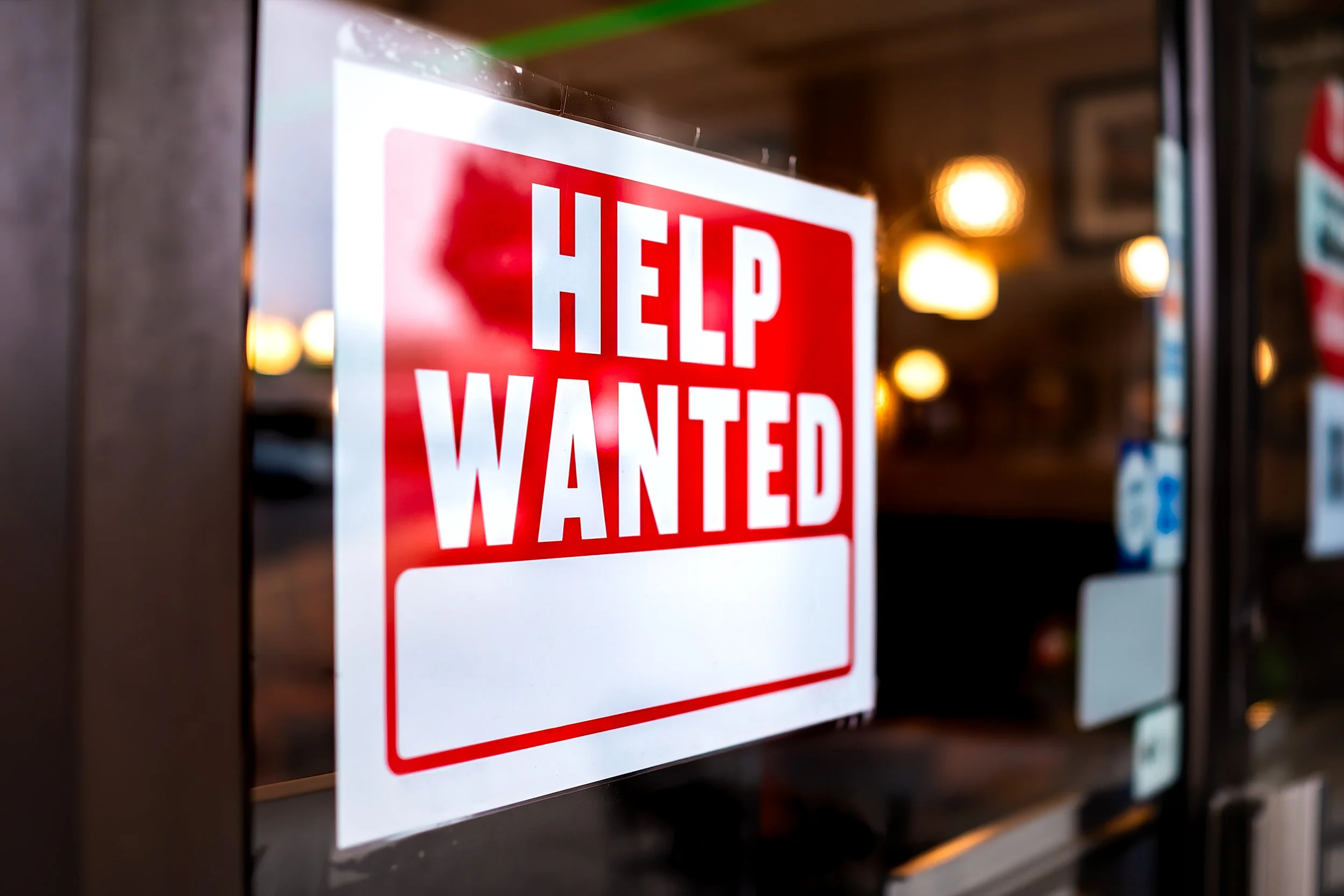Recently, that is within the last few months, we’ve noticed some unusual shifts happening around town to service-based businesses, which is likely the case in many other parts of the U.S. The number of staffing-intensive businesses like coffee shops, restaurants, and general merchandise stores are changing their operations (open hours, pricing, wait times and what’s being done there). Below are a just a few of the changes we’ve noticed locally:
Starbucks now closes around 3:00 PM (several hours earlier than before). Wait times are often 30 minutes from the time an order is placed until being ready. Local stores seem to offer a more chaotic experience – not exactly the “calm coffee shop” promise of the past.
Chipotle: (2 separate stored in our area) were not taking customers inside their restaurants – that is, they’re only accepting phone or online orders during busy times around 5:00 PM.
Other restaurants (local only) have been serving people during fewer mealtimes than before. For example, a few smaller restaurants that were once open for lunch and dinner, now only being open for dinner, and only after 5:00 PM.
Help wanted signs are posted on almost every single storefront.
We do know that staffing shortages are leading to wage inflation, but what can the Census’s ongoing Household Pulse Survey tell us about the labor shortage? The survey tracks reasons why Americans are not working. The survey may lead us to identify motivations behind labor-force exits. Just after Covid-19 hit, the Census Bureau began the Household Pulse Survey, designed to ask Americans how the pandemic was affecting them economically, socially, and emotionally. Because the respondents include a cross-section of all adults, whether or not they are working, the survey can reveal reasons why people aren't working. The answers are weighted to reflect the adult population as a whole. In one multi-part question, respondents are asked if they are employed. If they are not, they are asked to specify why. In the following list, we see people categorized by the reasons for unemployment - for example, all people not working because they were laid off or furloughed or their employer closed, are grouped together in such a way that roughly corresponds with "involuntary unemployment." That is, they didn’t choose to not work.
Unfortunately, since the Census didn’t conduct this survey before Covid-19, we can't compare any recent results with pre-pandemic America. Nevertheless, the results are revealing. Here, we show the numbers at four distinct dates:
Late April 2020 (the first survey, when the economy was under lockdown).
Late January 2021 (near the peak of winter infections).
Late June 2021 (at the summer low point in new cases and deaths).
Early October 2021 (the most recent survey).
The most important bottom line is this: The number of Americans jobless due to typical unemployment reasons (laid off, employer closed, etc.) is down 39.5 million from April 2020. But the overall number of jobless people is down only 16.3M. That means 23.2M more people than before are not employed for other reasons. In other words, yes, there is a very large increase in the number of American adults who are unemployed but they’re but they’re unemployed by choice.
So, what are these reasons? Let’s add them up:
Covid-19: 3.7M Americans aren’t working because they either have Covid-19 symptoms or are caring for someone with such symptoms. That’s 2.4M more people than in April 2020, when daily deaths were 40% higher. Economists and the medical community surmise that many of these people are probably suffering from Long Covid.
Early Retirement: Over the last 18 months, 6.2M more Americans have retired. Much of this rise happened late last year and early this year. We at Aspire certainly saw many clients reach financial independence and a higher number actually transition into retirement or quit their jobs than in the past as well. While we don't have a pre-pandemic comparison, the Dallas Fed estimates there have been 1.5M more retirements than expected since February 2020.
Disengagement: 5.5M Americans aren't working because they "don't want to be employed." As one of our clients put it “now that I’ve reached financial independence, you’re telling me that I don’t have to put up with the “B.S.” any longer!?” That's an increase of 1.7M since April 2020. This likely reflects the historic growth in real disposable income and investment assets. Be it from excess government stimulus or unemployment payments, there are quite a few people who clearly don't need the money right now.
Other Reasons/Didn't Respond: 24.9M Americans aren't working for other reasons or did not respond. That’s an increase of 10.8M. Roughly 60% of this category is people who gave "other reasons."
While we can’t say for certain what their reasons are, one possibility that isn’t getting a lot of press coverage are the impact that vaccine mandates are having on employment. There is a lot of talk within social media circles by employees who are making the choice to opt out of the vaccine. Some have made the decision to hold off on getting the vaccine, stating that they don’t want to leave their jobs, but with the Biden Administration’s vaccine mandates imposed on companies with 100 or more employees, many aren’t given a choice. If they choose not to be vaccinated, they are being forced out.
Another possible shift underway is what economists are calling a "turning away from the market economy." This includes multigenerational households in which people are "doing without (or handling themselves) some of the services and products they'd otherwise be working to pay for, whether it's childcare, parental care, meals, education, or personal care."
All this is very interesting in that it conveys a common narrative throughout the data. That is that people are choosing to quit or not work for many reasons, and it will likely take many months, if not years to return to where we were before covid. Millions are making the choice that the money they were receiving from employment is not as valuable as something else in their lives. When you combine this with the fact that our governments also continue to send stimulus, it has an affect at the macro-level. We’re absolutely seeing that play out today.
How else can we help you wrap up 2021 and position yourself and your wealth for the year ahead? As always, we stand ready to assist!



